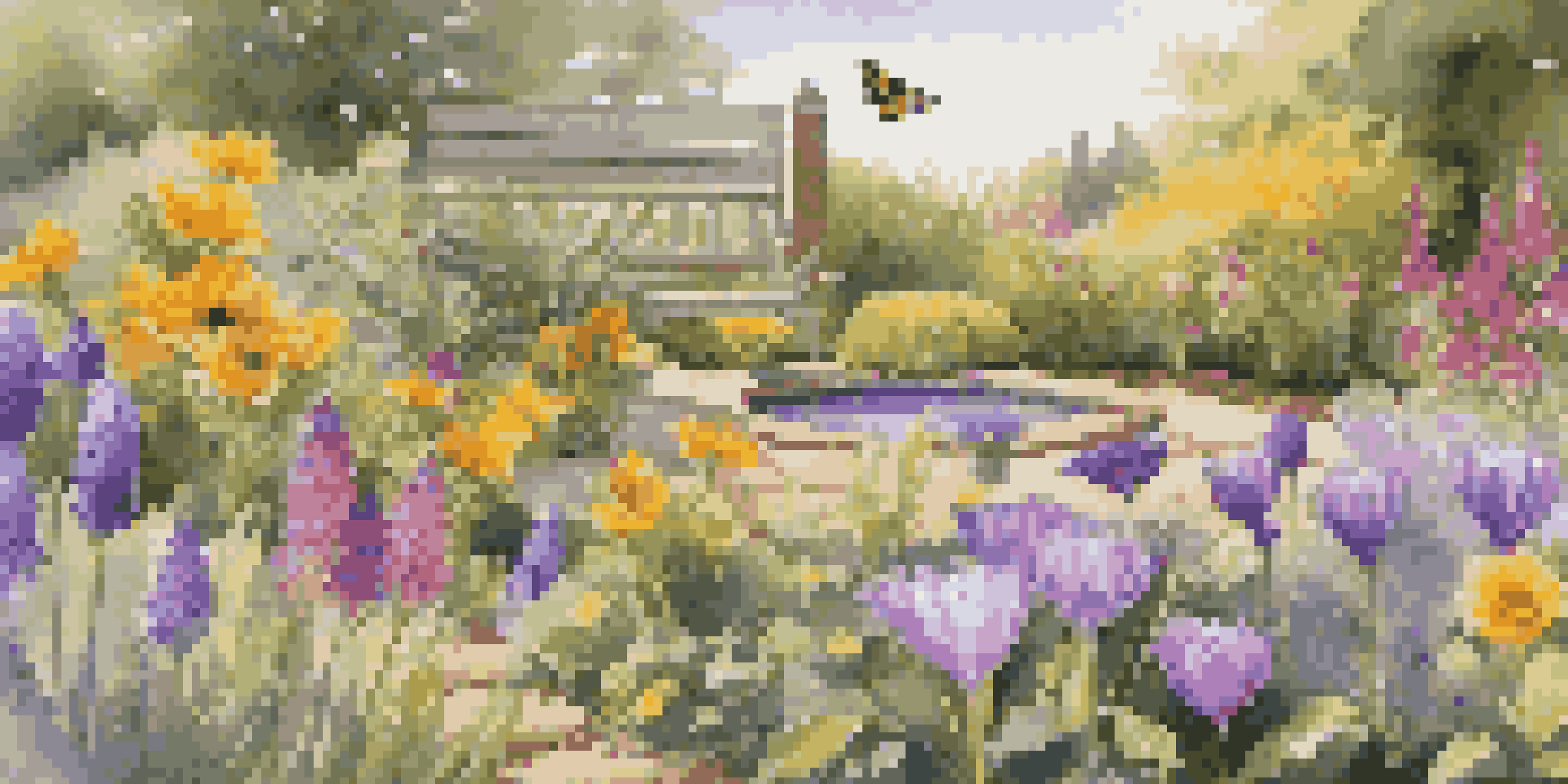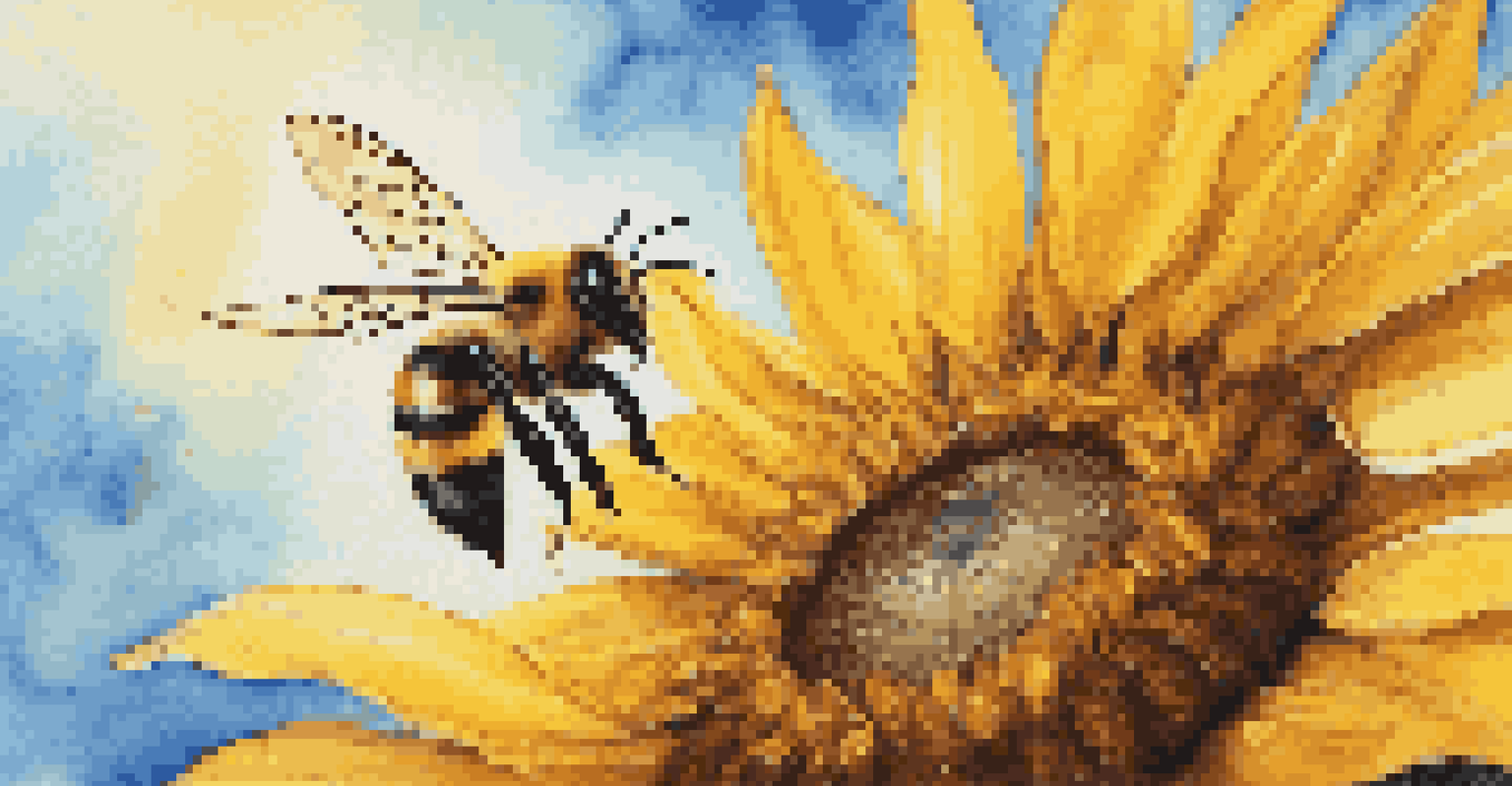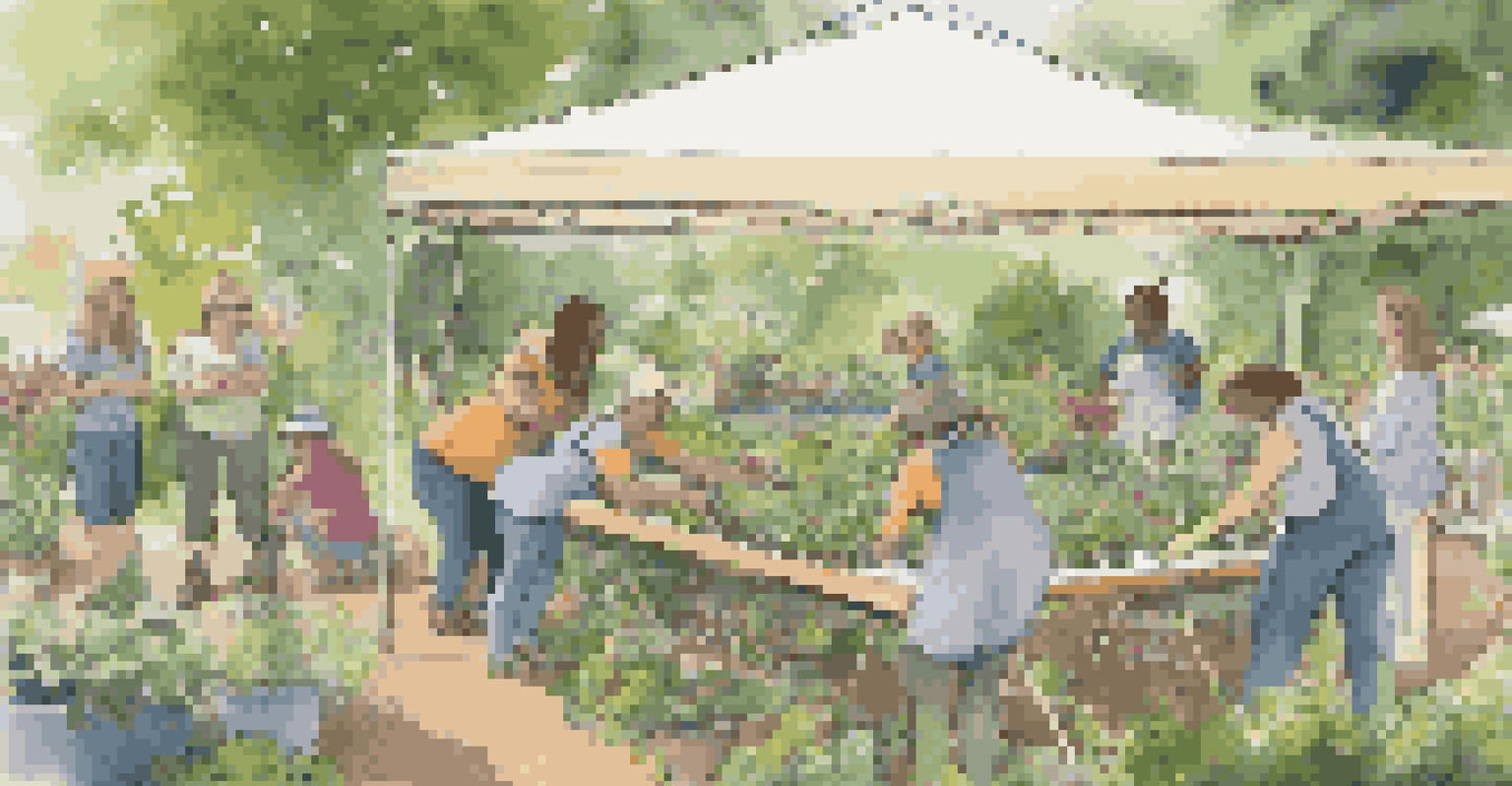Creating a Pollinator-Friendly Garden Using Digital Resources

Understanding the Importance of Pollinators
Pollinators, like bees, butterflies, and hummingbirds, play a critical role in our ecosystem by helping plants reproduce. Without them, many of the fruits, vegetables, and nuts we enjoy would disappear. This makes creating a pollinator-friendly garden not just a personal project, but a vital contribution to the environment.
The hum of bees is like a lullaby for the gardener’s soul.
Incorporating pollinator-friendly plants can increase biodiversity and support the larger food web. By attracting these essential creatures, you’re paving the way for healthier gardens and landscapes. Plus, the joy of watching busy bees and fluttering butterflies can be a rewarding experience.
Digital resources are available to help you understand which plants attract specific pollinators and how to create an inviting habitat. Let’s explore how technology can assist you in becoming a steward for these vital insects.
Researching Native Plants for Pollinators
The first step in creating a pollinator-friendly garden is selecting the right plants. Native plants are particularly beneficial because they have evolved alongside local pollinators, ensuring a natural fit. You can use online databases or local extension websites to find a list of native plants suited for your area.

When researching plants, consider their bloom times, which can provide food sources throughout the growing season. For example, planting a mix of early bloomers like crocus and late bloomers like asters can ensure that pollinators find food from spring through fall.
Create Pollinator-Friendly Gardens
Designing a garden that attracts pollinators enhances biodiversity and supports the ecosystem.
Many gardening apps and websites also feature interactive tools that allow you to visualize how certain plants will look in your garden. This can make the planning process both educational and fun!
Using Online Garden Design Tools
Once you have your list of plants, it’s time to think about layout. There are various digital garden design tools available that can help you create a blueprint for your pollinator garden. These tools allow you to drag and drop plants into a virtual space, helping you visualize your garden before you dig.
To plant a garden is to believe in tomorrow.
Some popular platforms even provide information about sunlight requirements and spacing for each plant, ensuring that you make informed decisions. Using these resources can also spark creativity—maybe you’ll find inspiration to add a butterfly garden or a bee hotel design!
By planning digitally, you can save time and effort, ultimately leading to a more successful garden that effectively attracts pollinators.
Creating a Diverse Habitat for Pollinators
A successful pollinator garden goes beyond just flowers; it should include a variety of habitats. Incorporating features like water sources, shelter, and nesting sites is crucial. You can find numerous online guides that detail how to create these elements, making your garden a welcoming environment for pollinators.
For instance, adding a small birdbath can provide hydration for bees and butterflies, while native shrubs can offer shelter from the elements. Even leaving some areas of your garden unmulched can create perfect nesting spots for ground-nesting bees.
Utilize Digital Tools for Planning
Online resources and garden design tools can help visualize and plan a successful pollinator garden.
The more diverse your garden is, the more appealing it will be to various pollinators. By utilizing digital resources, you can find ways to enhance biodiversity in your own backyard.
Incorporating Pollinator-Friendly Practices
While planting is essential, adopting pollinator-friendly practices is equally important. This includes avoiding harmful pesticides and opting for organic gardening methods. Many online platforms offer courses and resources on organic gardening techniques that promote a safe environment for pollinators.
Additionally, consider creating a 'no-mow' zone in your yard to allow wildflowers to thrive. This not only supports pollinators, but it also contributes to the overall health of your local ecosystem.
Engaging in these practices fosters a sustainable garden that benefits both you and the pollinators. Plus, sharing your journey online can inspire others to take the same approach!
Engaging with Community Resources and Workshops
Don’t underestimate the power of community when it comes to creating a pollinator-friendly garden. Many local gardening clubs and environmental organizations host workshops and events that can provide hands-on experience. Checking social media or community boards can lead you to invaluable resources.
These gatherings not only offer practical knowledge but also foster connections with fellow gardening enthusiasts. Sharing tips and tricks with others can enhance your gardening experience and motivate you to try new ideas.
Engage with Community Resources
Participating in local workshops and gardening clubs fosters connections and expands knowledge about pollinator gardening.
Participating in these community events can also lead to collaborations, such as community pollinator gardens, which further amplify your impact on local ecosystems.
Sharing Your Garden Journey Online
Once your pollinator garden is flourishing, why not share your journey with others? Social media platforms are great places to showcase your progress and inspire others to create their own pollinator-friendly spaces. Documenting your garden’s evolution can also serve as a personal reflection of your commitment to environmental stewardship.
Creating a blog or joining gardening forums can open up discussions on challenges you face and solutions you've found. Engaging with an online community can provide valuable insights and encouragement as you embark on this gardening adventure.

By sharing your experiences, you contribute to the growing movement of individuals dedicated to supporting pollinators and promoting biodiversity.